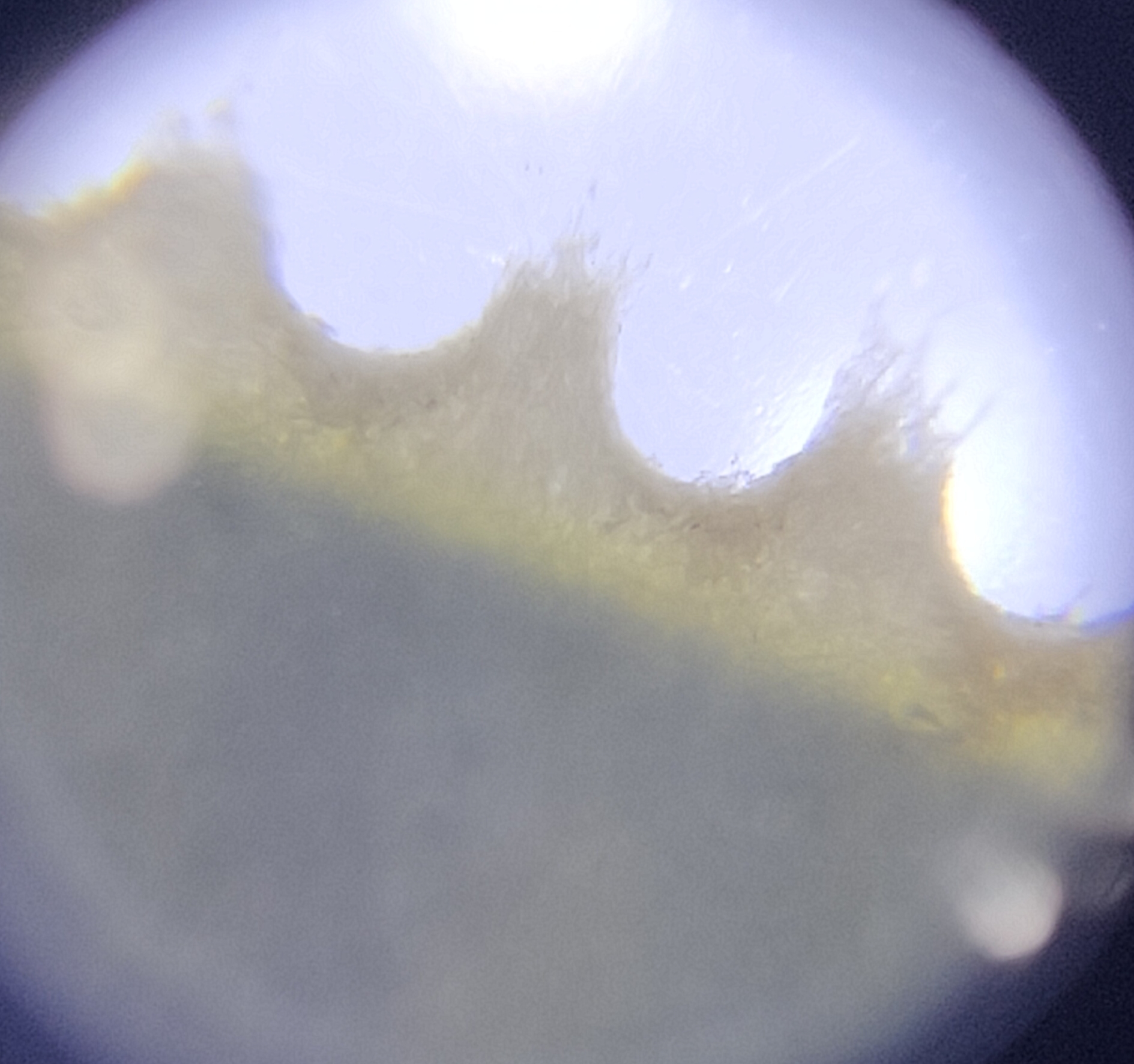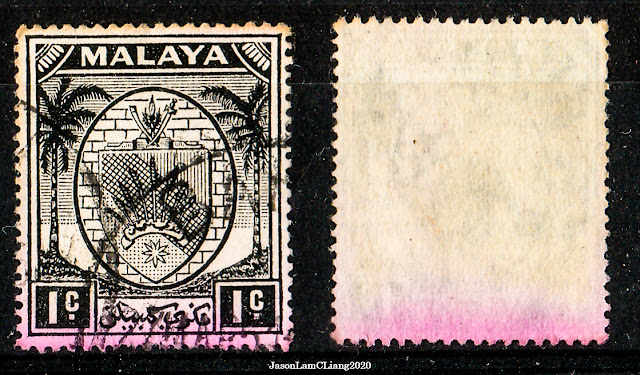Identifying Paper Types of the B.M.A Malaya Overprint: Substitute, Chalk, and Thin Striated Paper
Initially, chalk paper was the default paper type introduced as means to combat the re-use of stamps. The chalky coating used enabled ink, conveniently both the prints and postal markings, to adhere better to which re-use of stamps via removal of the cancellation would damage the stamp design. Due to war-time shortages during and after World War II, chalk paper was replaced by what is known as ‘ordinary paper’ as a substitute (hence, it was also known as substitute paper).
Generally, this
BMA Malaya series was seen in three paper types:
a. Substitute paper / Ordinary paper
b. Thin striated
paper
c. Chalk paper
The quickest way in identifying paper types, specifically in distinguishing between ordinary paper and chalk paper is by the silver scratch test. Upon scratching the surface of a chalk-coated paper with silver, a faint dull grey line will appear. This technique was mentioned in Stanley Gibbons' catalogue. However, it was also discredited since scratching the surface of the stamp will damage it and reduce its cosmetic value. Not a good move unless it is done on a used copy.
Worry not, there is a safer way. One can tell the paper type according to how the print or ink appears. The general rule of thumb: Chalk-coating is smooth; therefore, the print also runs crispy smooth.
To a more detailed description:
 |
| This is a snippet from a part of my project; I'm not sure whether I should go forward with my plan to publishing a small booklet on BMA. |
 |
| Substitute Paper |
 |
| Chalk paper |
 |
| Thin Striated Paper |
Of all the paper types, it is the acceptable answer to say that only Chalk Paper and Thin Striated Paper are coated to enable easier ink adherence, while Substitute Paper had no coating applied since, like the name implies, it is a substitute due to war-time shortages.
However, in an interesting analysis performed by Lin Yangchen , it was found that there are versions of coated Substitute Paper. As the results on X-ray spectroscopy was performed on 50c BMA, I decided to check on a 50c stamp myself.
 |
| Substitute paper, which I presume to be the coated version as the prints were mottled with uneven ink distribution yet crisp enough to be of the characteristics of chalk paper. |
On paper morphology, pits are generally observed in Chalk Paper while exists only to a certain degree in Substitute Paper (I believe these are only on the coated versions).
 |
| Fibers seen on Substitute Paper |
 |
| Pits seen on Chalk Paper |
Additionally, Stanley Gibbons states that stamp surface would appear to be broken at perforation tips of Chalk Paper. Upon magnifying the perforation tips, I believe what 'broken' meant in that context are the cracks and fissures that appear from pressure applied by the perforating comb.
 |
| Chalk Paper. Note the small crack, which is consistent in all similar paper types from the ones I have scanned. |
 |
| Substitute Paper for comparison |
It did not include more pictures of the striated paper version since I could not get a sharp enough shot with my clip-on magnifier. Looks like I have to visit my lab for the microscope.
Notes on paper types like this is not new, and my write-up is a reiteration/compilation of years of findings from previous pioneers and philatelists to which I am greatly inspired by.
I am currently assembling/re-arranging my BMA series by paper types for ease of reference. I am still lacking two more, which conveniently and logically are the costlier ones.
 |
| On Substitute Paper |
 |
| On Chalk Paper |
However, I am still lacking a lot on Thin Striated Paper. It could be that the used copies that are with me have gone unnoticed to the naked eye as Thin Striated Paper but who's to complain. I am currently in the process of buying/scanning/obtaining copies for Thin Striated Paper. Might take a while but that's the fun of it.
Thanks for dropping by!




Comments
Post a Comment